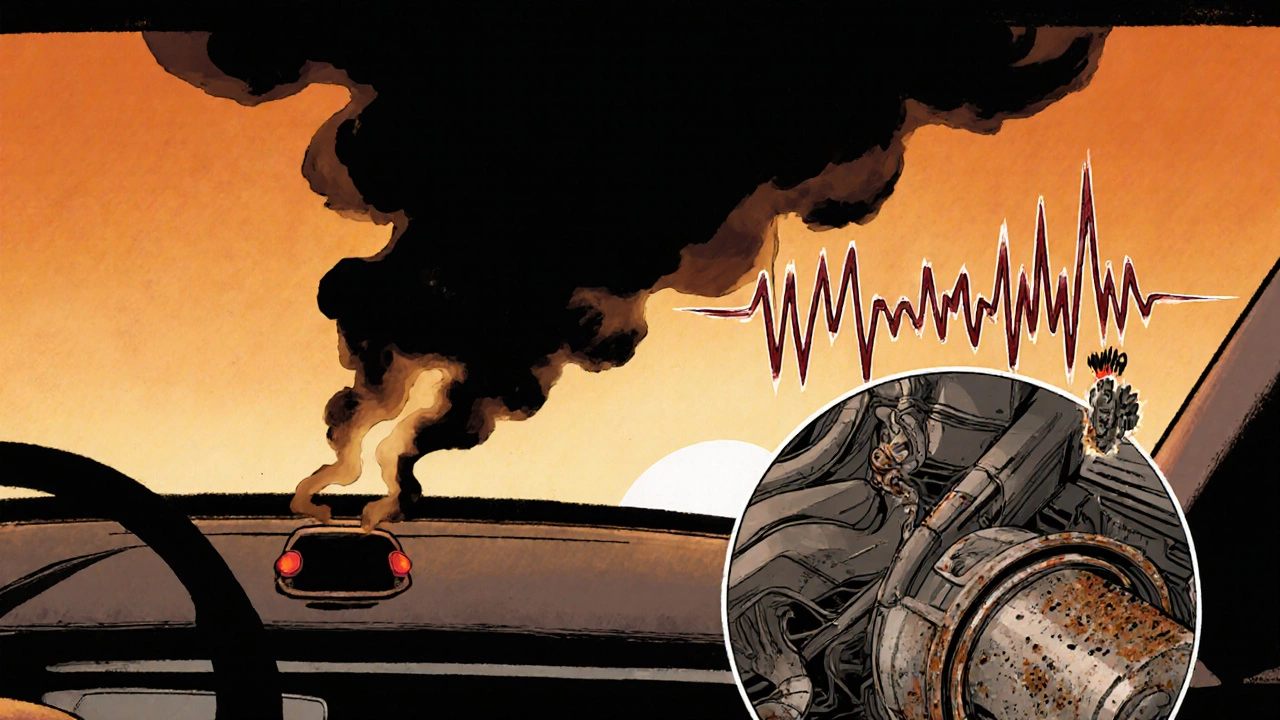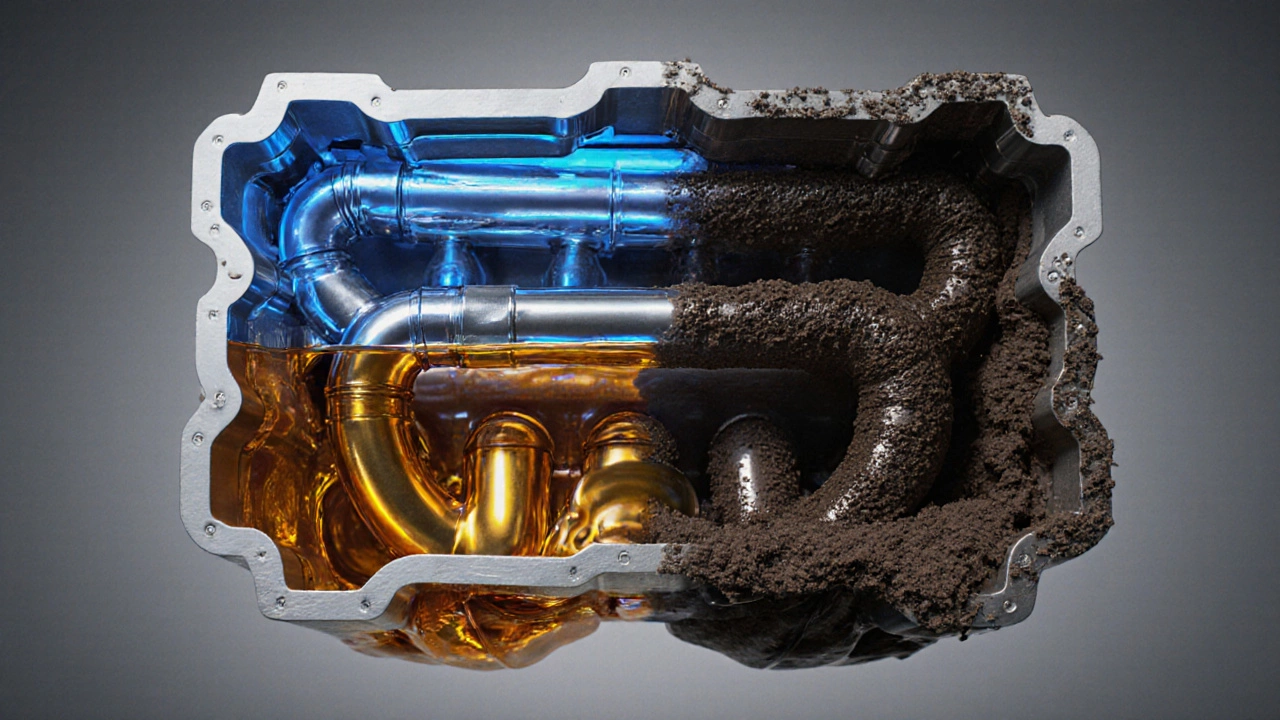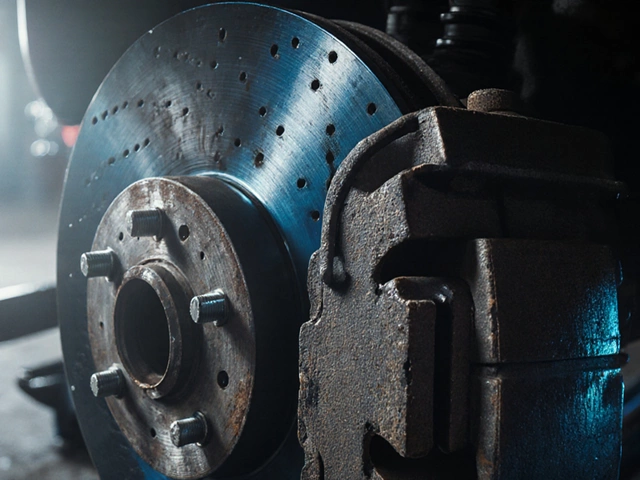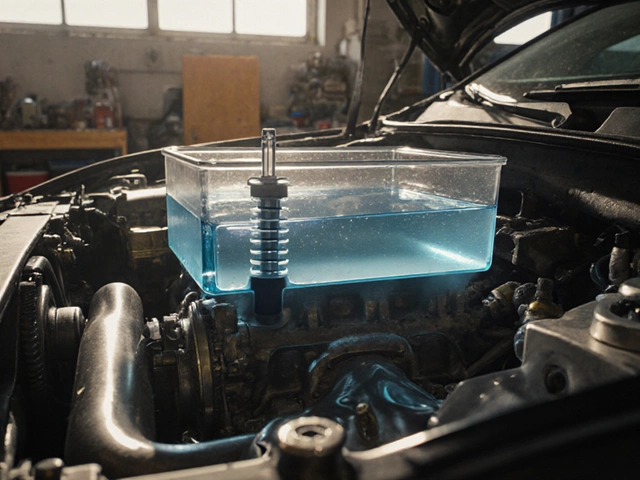Oil Change Cost Estimator
Oil Change Cost Calculator
Find out how much you might spend on engine repairs if you delay your oil change. Enter your vehicle details to see potential costs.
Pro Tip: Regular oil changes cost $150-$250 but can prevent repairs costing $1,500+. The recommended interval is 5,000-10,000 km for conventional oil and 8,000-12,000 km for synthetic.
Quick Summary / Key Takeaways
- Skipping an oil change lets old oil break down, forming sludge that clogs vital pathways.
- Short‑term symptoms include noisy engine, reduced power, and higher fuel use.
- Long‑term damage can cost thousands - bearing wear, oil‑pump failure, and even catalytic‑converter damage.
- If you realise you’re late, change the oil immediately and inspect the filter.
- Set reminders, track mileage, and use the manufacturer’s recommended interval to avoid the hassle.
When you miss an oil change, the engine’s lifeblood starts to lose its protective powers. The question on everyone’s mind is: what happens when you overdue an oil change? Below we break down the chemistry, the warning signs, and the real cost of delaying that simple service.
What an Oil Change Actually Does
At its core, an oil change removes contaminated oil and replaces it with fresh engine oil. Fresh oil provides three critical jobs:
- Lubricates moving parts so they don’t grind against each other.
- Cools the engine by carrying heat away from hot spots.
- Cleans by suspending microscopic particles and preventing them from settling as sludge.
The process also swaps out the oil filter, which catches larger debris that would otherwise circulate.
How Oil Degrades Over Time
Even the best synthetic blend can’t stay pristine forever. As the oil circulates, it absorbs heat, moisture, and combustion by‑products. After a certain mileage (often 5,000-10,000 km for many modern cars), the oil’s viscosity drops, and its ability to carry heat and suspend particles erodes.
When you keep driving past the recommended interval, the oil turns into a thin, gritty slurry. This slurry starts to coat internal surfaces, turning into sludge. Sludge is essentially “engine gunk” that can block oil passages, starve components of lubrication, and cause hot spots.

Immediate Symptoms of an Overdue Oil Change
Most drivers notice something is off before serious damage occurs. Common, short‑term clues include:
- Engine noise that sounds louder or “knocking.”
- Dark, gritty exhaust smoke, especially on startup.
- Oil pressure warning light flickering on the dashboard.
- Reduced acceleration and a sluggish feel at high RPMs.
- Higher fuel consumption - the engine has to work harder.
If any of these appear, it’s a clear sign the oil has lost its protective qualities.
Long‑Term Damage You Might Face
Continuing to drive with deteriorated oil invites a cascade of problems. Below we map the most common failure points.
| Component | What Happens | Typical Cost (AU$) |
|---|---|---|
| Engine bearings | Insufficient lubrication leads to scoring and eventual bearing seizure. | 1,500-3,500 |
| Oil pump | Sludge clogs pump channels, reducing oil pressure. | 800-1,800 |
| Catalytic converter | Unburned fuel and oil vapors overheat the converter, causing premature failure. | 1,200-2,500 |
| Engine block | Sludge builds up in oil galleries, leading to hot spots and possible warping. | 2,000-4,500 |
The table shows why a missed service can quickly turn into a costly repair bill. In worst‑case scenarios, the engine may need a full rebuild or replacement.
Why the Oil Filter Matters
The oil filter is your first line of defense against debris. When oil is overdue, the filter becomes saturated with sludge, losing its filtering efficiency. A clogged filter raises oil pressure, triggering the dashboard warning and potentially starving downstream components.

What to Do If You’re Already Late
- Check the oil level and condition. Pull the dipstick, wipe it clean, re‑insert, and pull again. If the oil looks black, gritty, or smells burnt, it’s time for a change.
- Schedule an immediate oil change at a reputable workshop. Ask the technician to replace the oil filter and inspect the oil pump and bearings for signs of wear.
- If the car has been driven for more than 2,000km beyond the recommended interval, consider a full engine flush before the new oil is added. This helps remove excess sludge.
- After the service, reset the oil‑change reminder in your vehicle’s onboard computer (or note the mileage in a log).
- Monitor performance for the next 500km: listen for unusual noises, watch fuel consumption, and keep an eye on the oil‑pressure light.
Taking these steps stops further damage and gives you a clear picture of any hidden problems.
Prevention: Making Oil Changes Habitual
The best cure is prevention. Here are practical tips that work for everyday drivers:
- Write the next service mileage on the receipt and set a phone reminder.
- If you have a newer car, enable the built‑in service‑interval alert.
- Keep a simple spreadsheet: mileage, date, oil type, filter part number.
- Choose the oil grade the manufacturer recommends - using a higher‑viscosity oil won’t offset a missed change.
- Take note of driving conditions: frequent short trips, towing, or extreme heat accelerate oil breakdown.
Sticking to the recommended interval (usually 8,000-12,000km for modern synthetic oils) keeps the engine clean, cool, and efficient.
Frequently Asked Questions
How many kilometres can I safely drive past the oil‑change interval?
Most experts advise no more than 500km beyond the schedule. Anything higher raises the risk of sludge buildup and component wear.
Will synthetic oil let me go longer than conventional oil?
Synthetic blends resist breakdown and can stretch the interval by 20‑30%, but they still need regular replacement. Check the manufacturer’s specification.
Can I change the oil myself if I’m overdue?
Yes, as long as you have the right tools and replace the filter. However, a professional can also inspect the pump and bearings, which might be harder for a DIYer.
What does a gritty oil dipstick indicate?
It usually means the oil has accumulated metal particles or sludge. That’s a sign you need an immediate change and possibly a deeper inspection.
Does an overdue oil change affect fuel economy?
Yes. Thin, dirty oil creates more friction, causing the engine to work harder and use more fuel - often a drop of 2‑5% in mileage.
By staying on top of oil changes, you keep your vehicle running smoothly and avoid surprise repair bills. Remember, the engine only needs clean oil to stay healthy - a simple service can save thousands.




